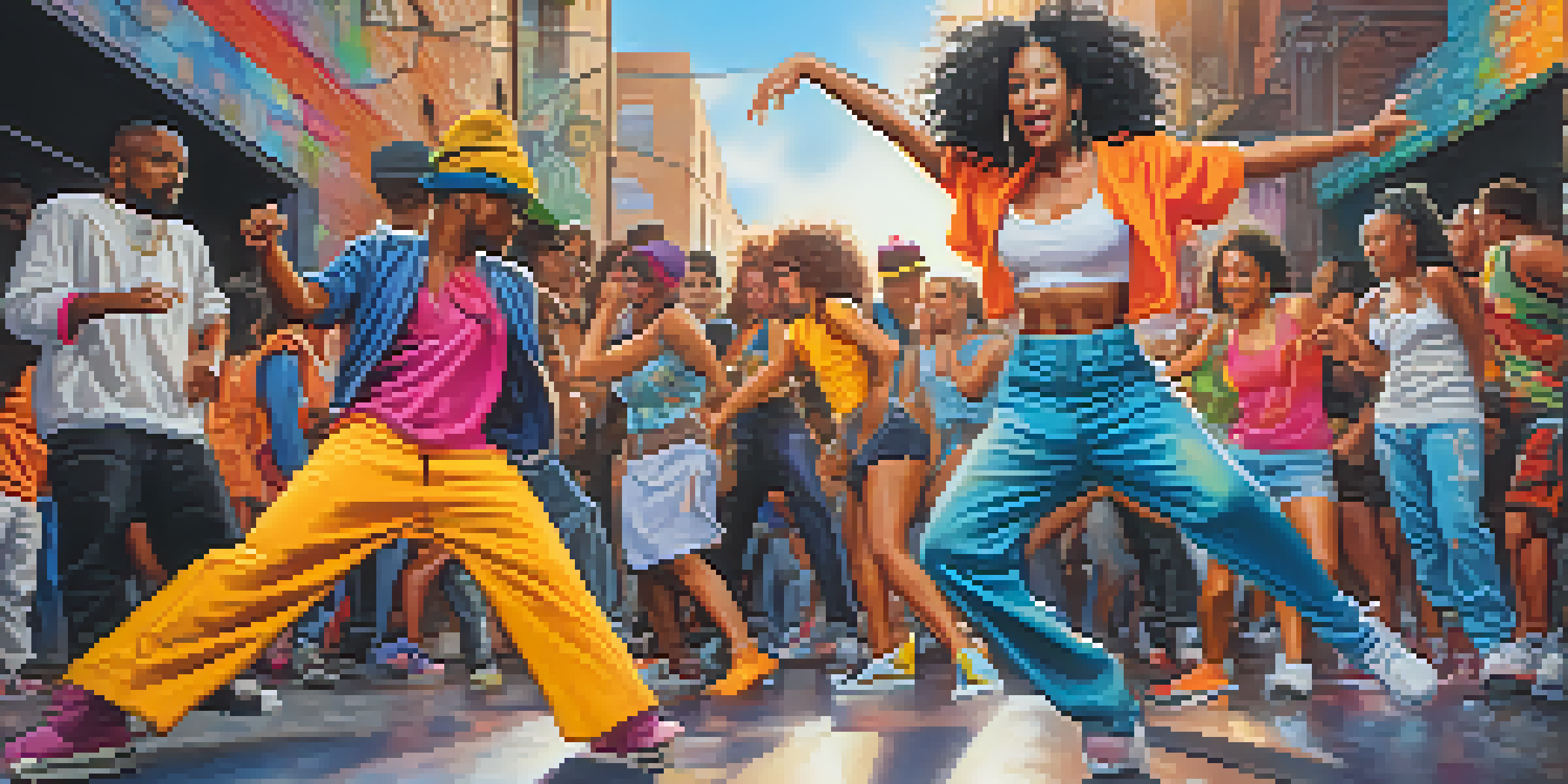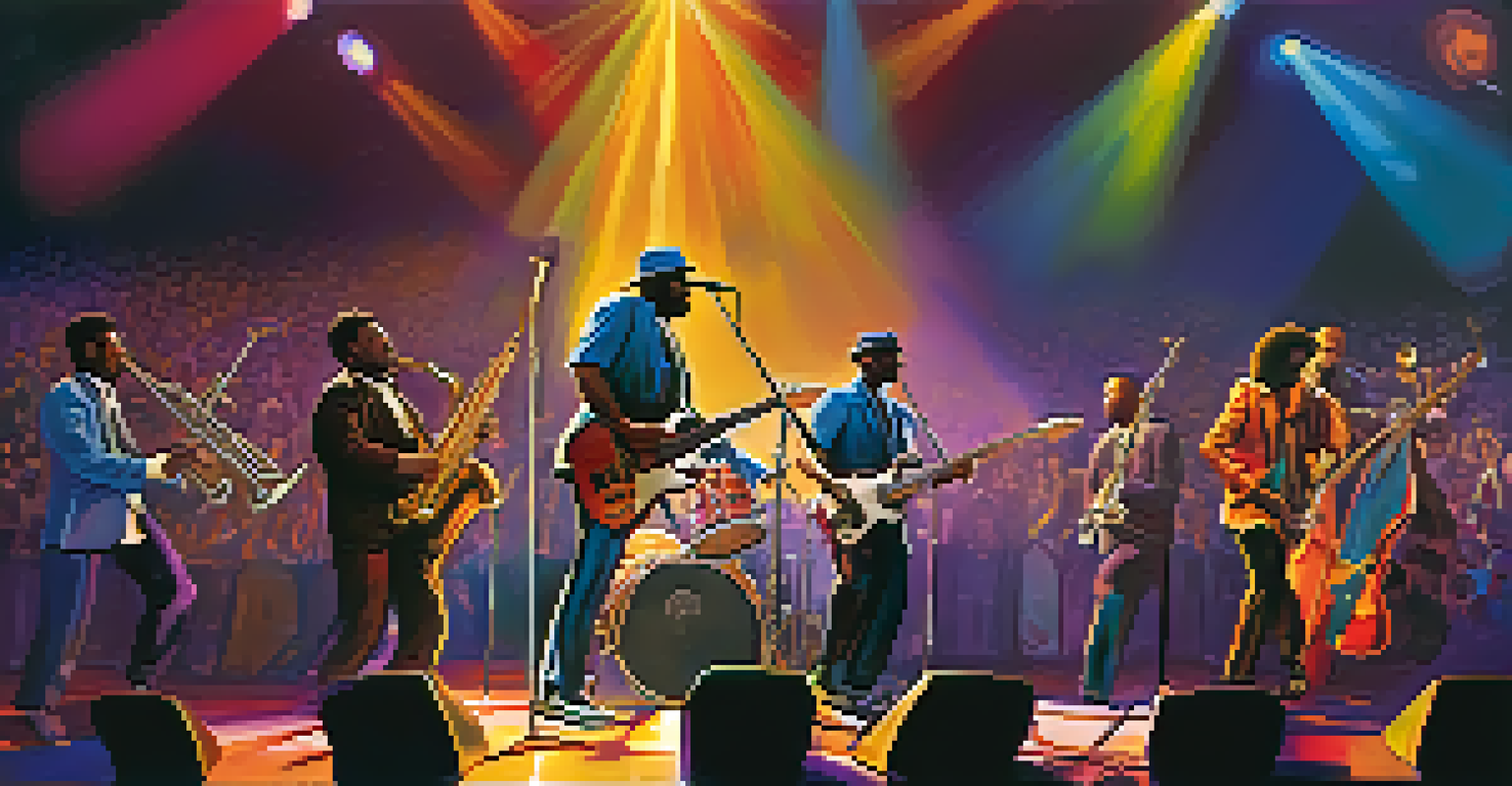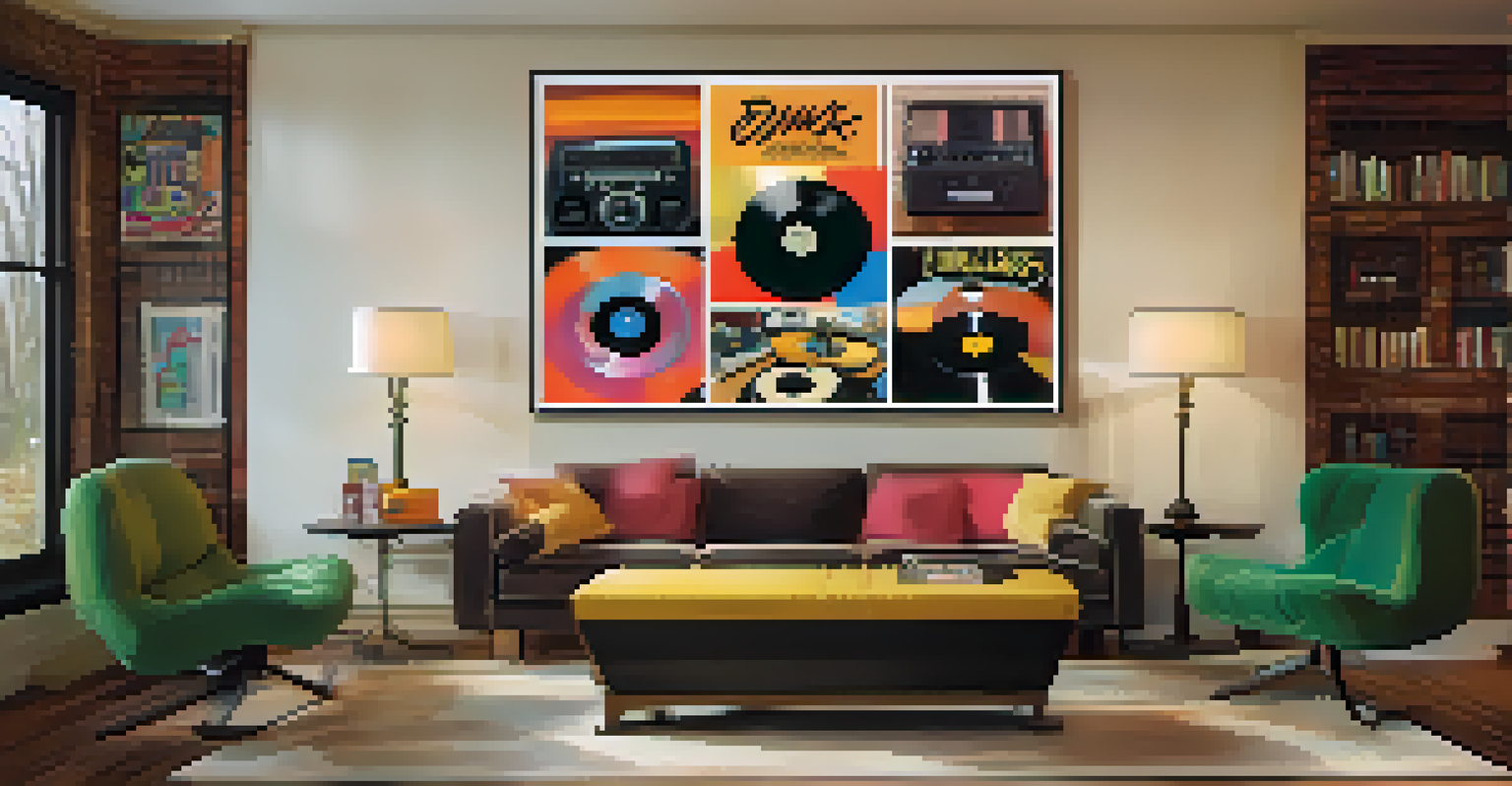Funk Styles: Origins and Their Cultural Relevance

The Birth of Funk: A Musical Revolution in the 1960s
Funk music emerged in the mid-1960s as a vibrant blend of soul, jazz, and R&B. Artists like James Brown and Sly Stone played pivotal roles in shaping this genre, infusing it with rhythmic grooves that made it irresistible for dancing. The emphasis shifted from melody to rhythm, creating a sound that felt both raw and electrifying, inviting everyone to get on their feet.
Funk is the backbone of all modern music. It's the pulse that inspires and drives creativity.
The genre's signature sound often features a prominent bass line, syncopated guitar riffs, and brass sections that add a punchy flair. This new style was not just about music; it was an expression of cultural identity, reflecting the social changes and struggles of the African American community during the civil rights movement. Funk became a soundtrack for empowerment and resistance.
As funk gained popularity, it also began to influence other genres, leading to the birth of subgenres like disco and hip-hop. The groove-laden beats and infectious rhythms made funk a versatile foundation for countless artists, ensuring its legacy would be felt for generations to come. Understanding its roots helps us appreciate the profound impact funk had on modern music.
Key Figures in Funk: Icons Who Shaped the Genre
When we think of funk, a few names immediately come to mind. Legends like George Clinton with his Parliament-Funkadelic collective, and Prince, who blended funk with rock and pop, redefined musical boundaries. Their creativity and theatrical performances captivated audiences, turning funk concerts into unforgettable experiences.

Other notable figures include Bootsy Collins, known for his flamboyant style and innovative bass techniques, and Earth, Wind & Fire, who infused funk with elements of jazz and soul. Each artist brought their unique flair, contributing to a diverse sound that made funk a melting pot of musical influences. This collaborative spirit is key to understanding the genre's richness.
Funk: A Voice for Change
Emerging during the civil rights movement, funk music served as a powerful expression of cultural identity and social justice.
These artists didn't just create music; they created a movement. Their work inspired countless musicians and dancers, shaping pop culture and paving the way for future artists. Funk's legacy lives on, reminding us of the power of creativity and collaboration in the music industry.
Funk Dance Styles: Movement That Celebrates Freedom
Funk music is intrinsically linked to its dance styles, which are as expressive and diverse as the music itself. Dances like the Robot, Locking, and Popping emerged alongside the genre, allowing dancers to express the infectious grooves through their bodies. Each dance style has its own flair, showcasing creativity and individuality.
Music is a weapon of cultural revolution, and funk is its battle cry.
For many, funk dance represents a form of liberation, encouraging people to let loose and embrace their unique moves. Dance battles often took place in local neighborhoods, fostering a sense of community and friendly competition. This communal aspect helped solidify funk as not just a genre, but a lifestyle that brought people together.
As hip-hop culture began to rise, funk dance styles evolved, influencing breakdancing and street dance. The rhythms of funk continue to echo in contemporary dance, proving that its impact goes beyond music. Today’s dancers still draw inspiration from these foundational styles, keeping the spirit of funk alive and well.
Cultural Significance: Funk as a Voice for the Marginalized
Funk music emerged during a time of significant social upheaval, serving as a voice for those who felt marginalized. The genre's roots in African American culture and its association with the civil rights movement created a powerful platform for expression. Lyrics often addressed themes of pride, resilience, and social justice, resonating deeply with listeners.
The vibrant energy of funk also provided an escape from the challenges of everyday life. It encouraged people to dance, celebrate, and embrace their identities amidst adversity. Funk concerts became gathering spaces where individuals could unite, share their stories, and uplift each other through music and dance.
Funk's Global Influence
Funk's infectious rhythms have transcended borders, inspiring diverse musical styles and communities around the world.
As we reflect on funk's cultural significance, it's clear that the genre transcended mere entertainment. It played a crucial role in shaping social consciousness and fostering community, reminding us of the importance of creativity in advocating for change. Funk continues to inspire movements today, proving its timeless relevance.
Funk's Evolution: From Classic Roots to Modern Interpretations
As music continues to evolve, so does funk. The genre has seen various adaptations, from the emergence of neo-soul in the 1990s to the contemporary funk revival led by bands like Vulfpeck and Lettuce. These artists pay homage to the classic sounds while infusing their unique twists, ensuring that funk remains relevant in today’s musical landscape.
Collaborations between funk musicians and artists from other genres further illustrate its adaptability. For instance, hip-hop artists frequently sample funk tracks, breathing new life into the classics while introducing them to younger audiences. This cross-pollination of styles keeps the spirit of funk alive, showcasing its versatility.
Moreover, funk festivals and events celebrate this rich history, bringing together fans and musicians from diverse backgrounds. These gatherings are a testament to funk’s enduring legacy and its ability to unite people through rhythm and dance. The evolution of funk is not just about music; it's a celebration of culture and creativity that continues to thrive.
The Global Impact of Funk: A Worldwide Phenomenon
Funk's influence extends far beyond its American origins, reaching audiences around the globe. Countries like Brazil, Nigeria, and Japan have embraced funk, incorporating its elements into their own musical traditions. This global exchange has enriched the genre, creating unique interpretations and styles that reflect local cultures.
For instance, Brazilian funk carioca blends traditional samba with funk influences, resulting in vibrant beats that resonate with dance enthusiasts. Similarly, Afrobeat, pioneered by Fela Kuti in Nigeria, showcases the rhythmic complexity of funk while addressing socio-political issues. These adaptations highlight funk's ability to evolve and inspire across different contexts.
Funk's Modern Revival
Contemporary artists are revitalizing funk, blending its classic grooves with new sounds to introduce the genre to a fresh audience.
International funk festivals and collaborations continue to foster a sense of community among artists and fans worldwide. The genre's universal themes of joy, resilience, and expression create connections that transcend geographical boundaries. Funk has truly become a global phenomenon, reminding us of music's power to unite and inspire.
Funk Today: The Genre's Resurgence and Influence
In recent years, funk has experienced a resurgence in popularity, with new artists bringing the genre back into the spotlight. Contemporary musicians are recognizing the timeless appeal of funk's grooves and incorporating them into their work. This revival has led to a renewed appreciation for classic funk tracks, inspiring both seasoned listeners and new fans alike.
Platforms like streaming services and social media have played a crucial role in this resurgence, allowing artists to share their music and connect with audiences globally. Playlists dedicated to funk have gained traction, introducing the genre to a wider audience and ensuring its legacy continues to thrive. This accessibility has also encouraged collaborations across genres, further blurring the lines of musical classification.

As funk continues to evolve, it remains a vital part of the musical landscape. Whether through nostalgic tributes or innovative new sounds, the spirit of funk is alive and well. Its infectious energy and cultural significance make it a genre that will undoubtedly inspire future generations.